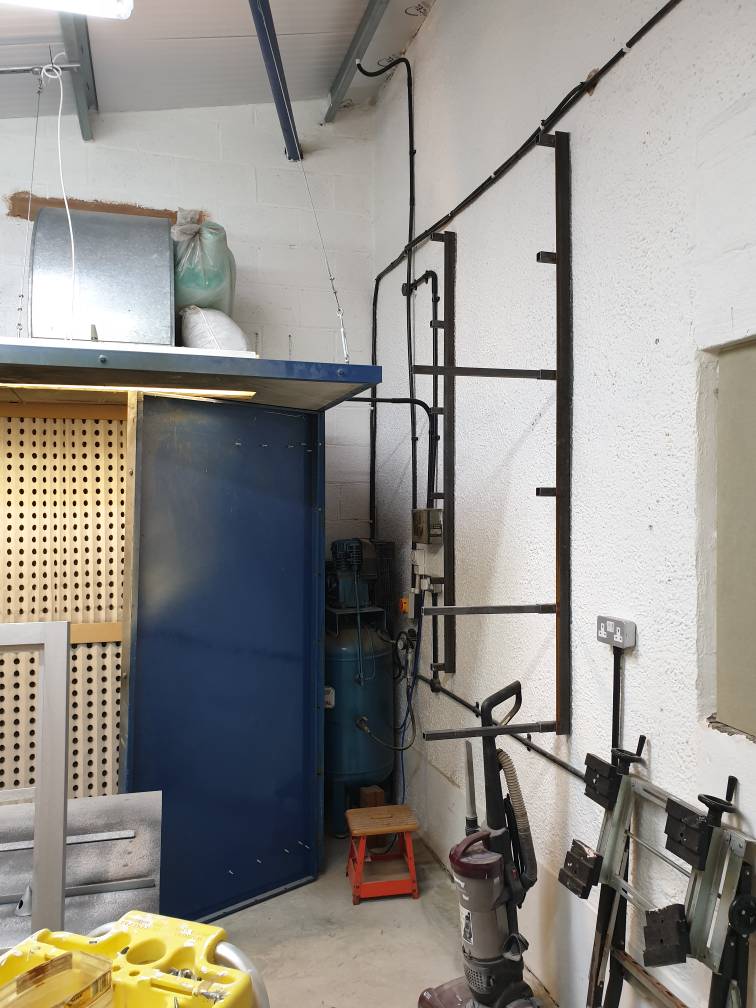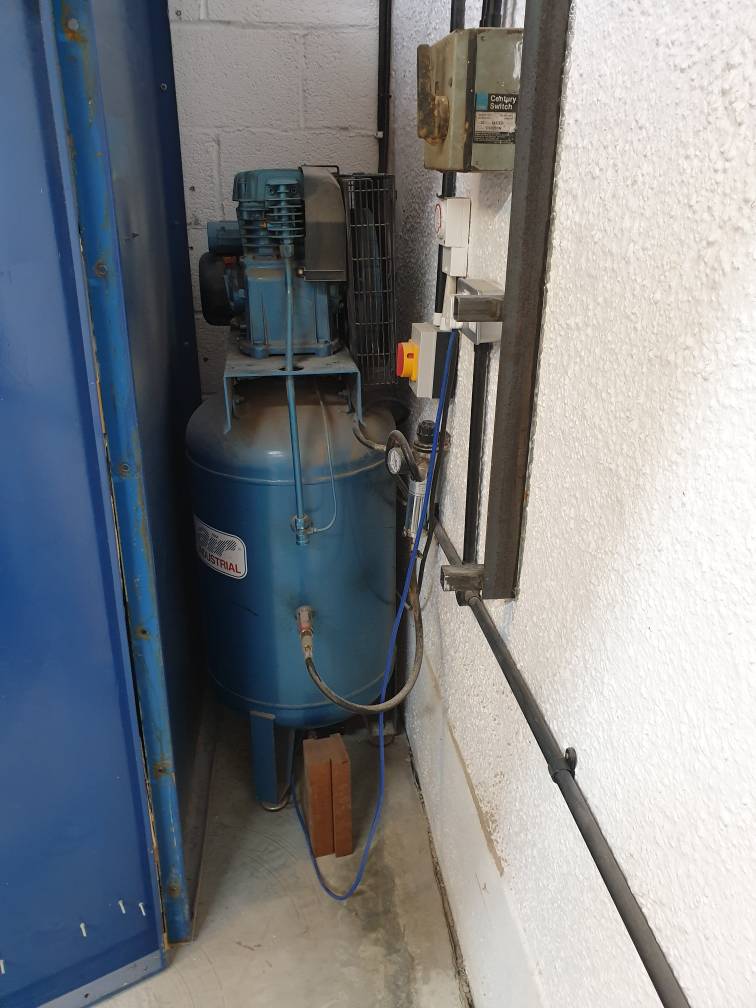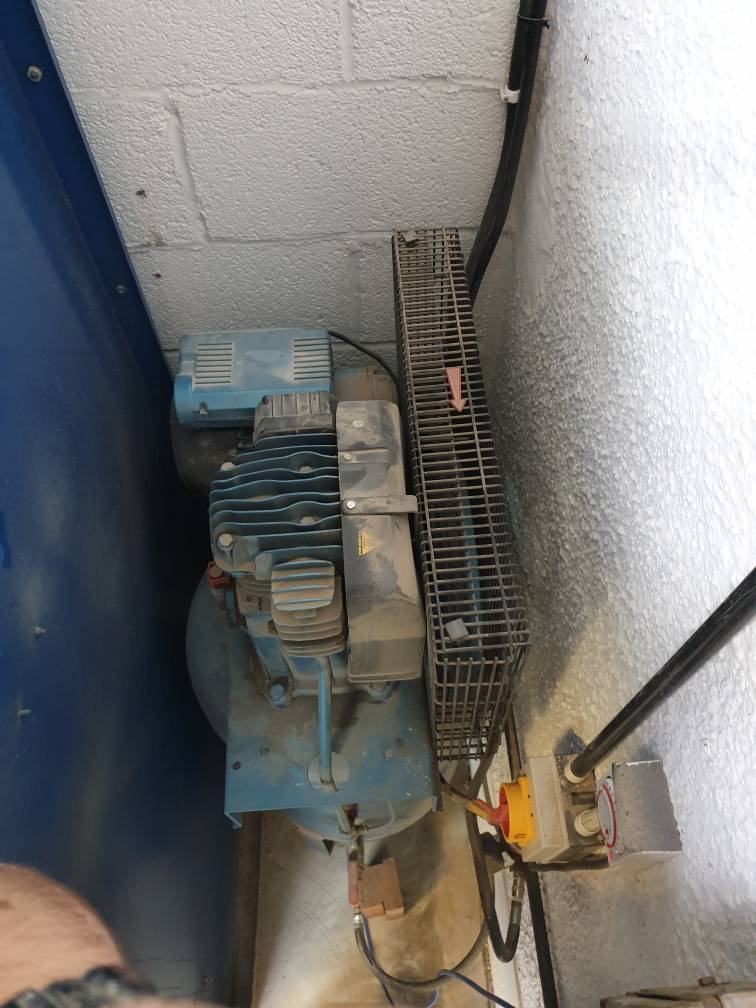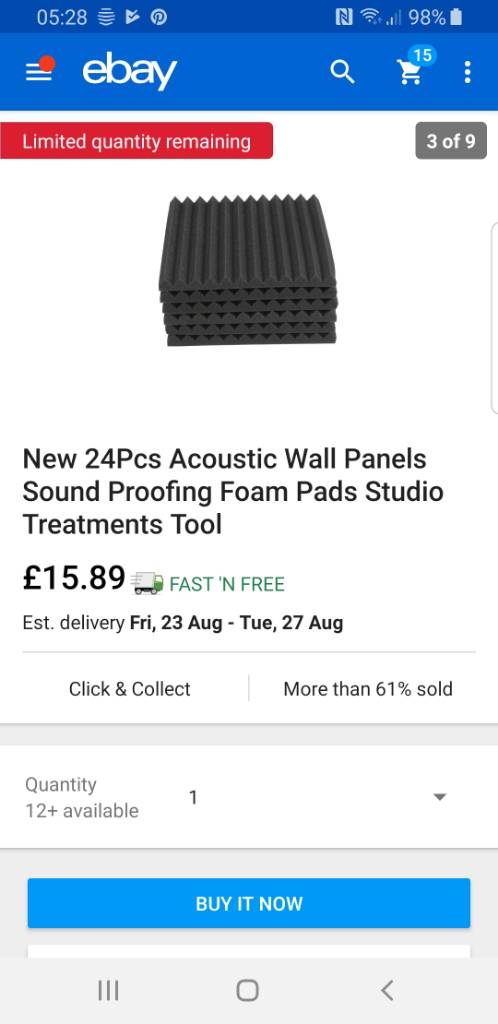In answer to your question Coley - yes those *ahem* "sound proofing" foam sheets will make a difference, by dispersing the energy of the sound waves.
If you think of sound waves as physical shock waves, that give you that *thump* in the chest, open cell foams and stuff like rockwool break up the wave into smaller waves - it cannot actually negate them as the first law of thermodynamics proves, it just breaks them up so the kinetic energy is more dispersed, this in turn lowers the magnitude of power, and in turn reduces the decibels.
But - this is less effective on lower frequencies - where density is more effective.....
But - it's not just density - RIGIDITY plays a factor ... lol I did say it was complicated stuff. Dense but "flexible" (in relative terms) will just turn the material being hit by the soundwaves into a vibrating soundingboard, ala your tin roof (I think I mentioned that), and dense but hard will just bounce them off entirely, like your concrete walls.
I'm not 100% certain but I'm reasonably sure that what's happening in your shop is the sound is being concentrated in the gap, by bouncing off the concrete walls and firing those waves directly at your tin roof, in one direction and another concrete wall (I assume) in the other. Did you ever read about those sound system "speakers" that were essentially just a pair of drivers (no cones) and cables and you attached them to a window or glass table? Same principle.
Next time your are there, take a shoe off and put your foot next to the compressor when it's on, if you can feel the vibrations, it's also transmitting sound through your concrete floor, which going by the feeble rubber pads on the feet I'm certain it is - they need to be AT LEAST rubber doorstop thickness, 40mm+ and not hard rubber but something softer.
Going back to the MDF question, I did have a table of materials that showed the relative densities vs thickness etc etc but can't find it atm - it did make me choose cementboard, the stuff tilers use as a backer in wet rooms, over MDF despite the added cost because iirc it gave a bigger sound reduction per £ spent than MDF.
Compressor sound is also a lower frequency, which density is the better factor for material to use to counteract it.
Here's one page I used that might help - it lays out the basic principles of material types and what they do to sound waves.
https://www.phelpsgaskets.com/blog/mate ... -dampening
Edit - re-reading it, the bit about CORK, sounds like the perfect solution, until you note that it turns sound energy into VIBRATIONAL energy, and we're back to the soundingboard problem - so you need an additional solution to combat that...
and so it goes on

I guess at the end of the day you need to decide how far you want the sound reduced...
nothing 90+ dB (typical compressor dB output)
Take the edge off - 80 dB
Annoying but tolerable hum you can hear even with the radio on - 70dB
Discernable hum if you concentrate with the radio on - 60dB
Background hum that can be ignored in a quiet room - 50dB
https://www.alarmgrid.com/faq/how-loud- ... ity-system
each 10dB drop will require an additional material or method.
I've probably re-stated a few things I've said before, but hope that gives you enough info to decide








































